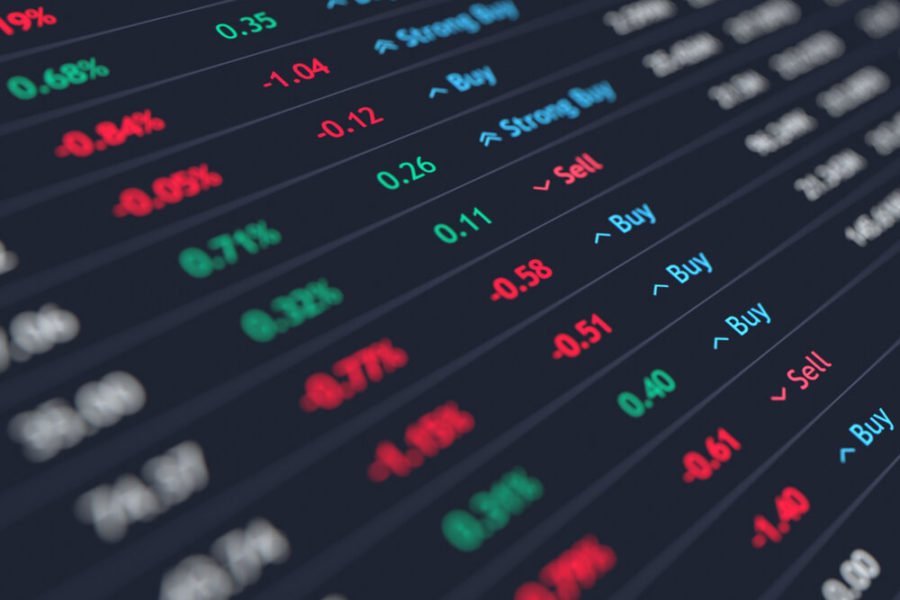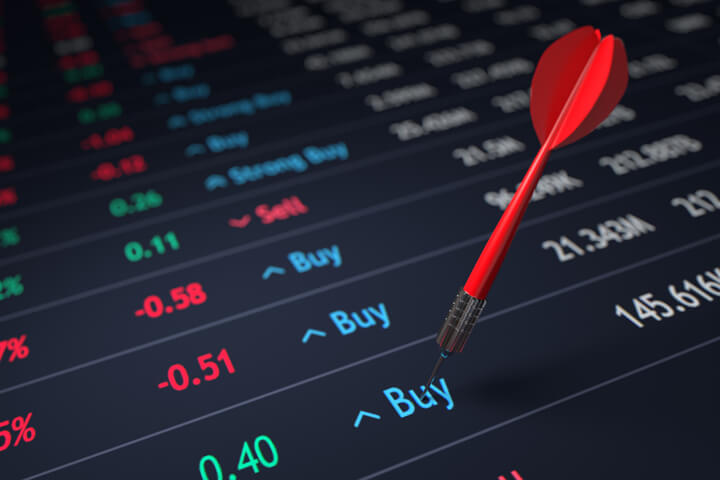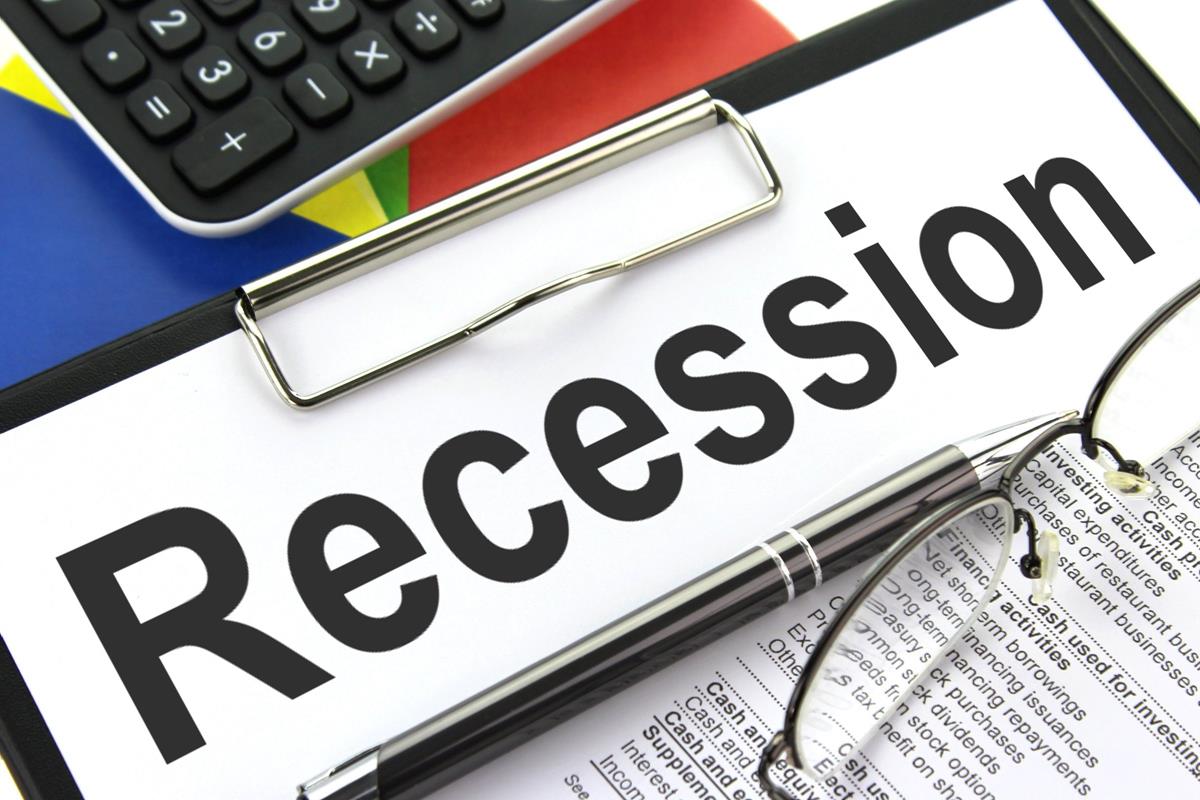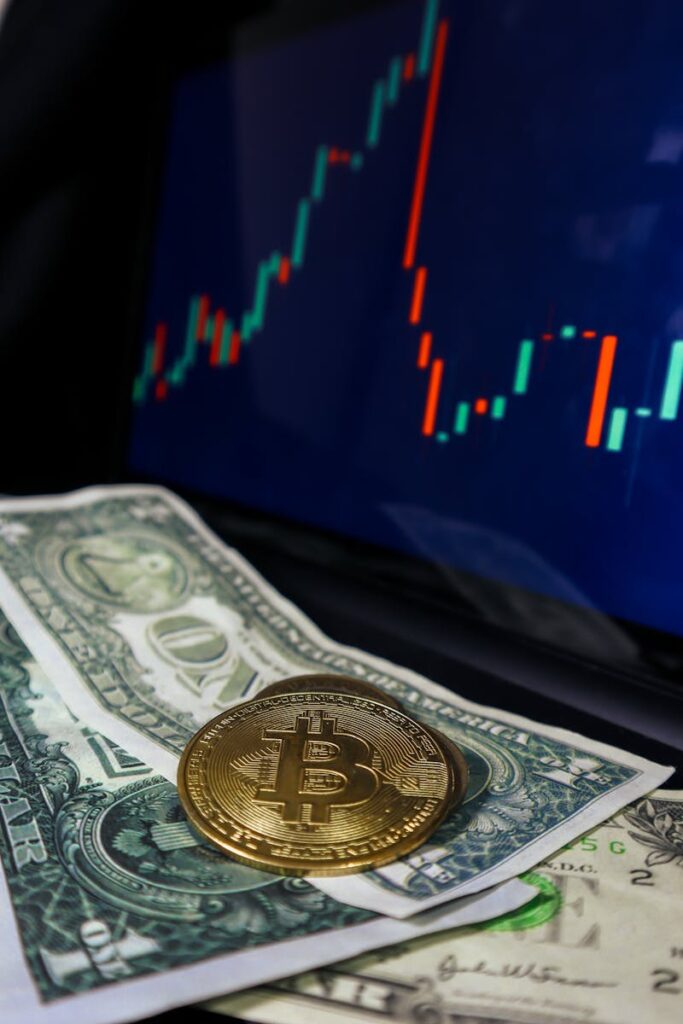
Doomsday Warnings: Robert Kiyosaki’s Crash Prediction and Hedge Strategies
Wow, what a ride the markets have been on lately! It feels like we’re navigating uncharted waters, and everyone from seasoned investors to everyday savers is trying to figure out what’s happening. The air is thick with uncertainty, and frankly, it’s exciting to dive into the data and see what the market is trying to tell us right now.
We’ve heard some pretty strong warnings from well-known figures in the financial world. Robert Kiyosaki, the author of Rich Dad Poor Dad, hasn’t been shy about sounding the alarm, stating that he believes “The biggest market crash in history is now happening now.” He’s been predicting this kind of event for years, even back in his 2002 book Rich Dad’s Prophecy.
Kiyosaki didn’t pull any punches in a recent post, saying he hopes he’s wrong but expects “the biggest market crashes in stocks, bonds, and real estate… are about to happen in the very very near future.” It’s a stark outlook, and he attributes much of the coming pain to what he anticipates the Federal Reserve and the U.S. Treasury will do if the crash worsens: print trillions in “fake dollars.
He’s concerned this money printing will significantly increase the M2 money supply, leading to “massive inflation.” His trust, he declares, is not with the Fed and Treasury turning on the “FAKE MONEY PRESS.” Instead, he’s placing his bets on what he calls “real assets” to protect him from this potential loss of purchasing power.
For Kiyosaki, these “real assets” are gold, silver, and Bitcoin. He’s been actively investing in these, even recently noting on April 20th that he was buying silver again, calling it “the biggest investment bargain today.” He even has some bold price targets, predicting silver, currently trading around $35, could hit $70 by 2026, an “explode 2X in price.
And let’s not forget his projections for Bitcoin, which he recently predicted could reach $200,000 this year and potentially surge past $1 million by 2035! His message is clear and consistent: hedge against the weakening dollar with these alternative assets and steer clear of traditional savings, famously stating for years, “‘Savers are Losers.’” He wraps up this line of thinking with a simple desire: “I want you to get richer… not poorer. Take care.”
While Kiyosaki’s warnings are certainly attention-grabbing, they tie into a broader narrative playing out in the markets, particularly concerning bonds. It feels like just yesterday, back in February, the S&P 500 was cruising near all-time highs, and optimism, especially around crypto, was palpable. Yet, even then, some analysis went against the grain, sensing a potential shift.
Looking back at analysis from last February, despite the market’s upward push, there was a sense that it lacked support from key stocks and sectors. This divergence, while it can persist, often acts as a cautionary signal unless all parts of the market participate in new highs. With money managers and retail investors seemingly “all-in,” the stage felt potentially set for a “rug pull” sometime this year.

Interestingly, this sentiment wasn’t new. Even earlier, on January 1st, analysis suggested adjusting positions in key AI names like Nvidia, anticipating lower price targets well before broader market concerns took hold. This proactive approach involved raising cash, with 50% cash raised in December of 2024, and using this cash for “aggressive buy targets” during periods of volatility.
Fast forward to today, and we see all major indexes officially in a technical bear market. Market sentiment readings are plumbing historically low levels. This naturally leads many to wonder if this downturn presents a generational buying opportunity or if further declines are on the horizon in the coming weeks or months.
Based on the current sentiment readings, even in a worst-case scenario, a “sizable bounce” is anticipated. However, the shifting global political scene, especially the extraordinary reaction in the bond market, has caused a change in strategy. The current thinking leans towards using any coming bounce to reduce risk, acknowledging the potential for a significantly larger bear market than what’s currently priced in.
This brings us to the heart of the mystery: the bond market. The trade war, ignited by recent tariff announcements, has taken center stage, causing extreme market drops and a level of uncertainty rarely witnessed. While everyone is focused on the tariff drama, there’s a more pressing, immediate issue unfolding behind the scenes.
Read more about: Navigating Social Security: Understanding Your Path to Retirement and Beyond, Including Crucial Survivor Benefits

Despite signs of slowing economic growth, a very unusual phenomenon is occurring: nobody seems to be buying government bonds. This is distinctly abnormal behavior and poses a significant problem that needs addressing. The yields currently being demanded for new bonds are too high, especially considering the U.S. government needs lower yields to efficiently finance the “breathtaking amount of debt coming due this year.
It’s worth noting a particularly strange reaction in bonds last October. Bonds started dropping *with* rates following the FED’s surprise 50 basis point cut, a trend that has continued. This is contrary to historical patterns, where bonds typically rise (and yields fall) when the Fed begins cutting rates. The usual logic is that the Fed cuts rates because they see growth and inflation slowing.
In a slowing economy, demand drops, leading to falling prices for goods, services, and stocks. This environment usually makes fixed-yield assets like Treasuries, perceived as safe, highly attractive to investors. They offer a stable return when other assets are declining, which is why the historical inverse correlation between stocks and bonds has been a market axiom stretching back as far as 1998.
Read more about: Are These Common Errors Sinking Your Retirement Dreams? What Experts Say About Boomers and Those in Their 50s
:max_bytes(150000):strip_icc()/GettyImages-157394940-7cffe51373fd43e2849e685d0c3fe713.jpg)
Bond Market Breakdown: The Collapse of a 25-Year Correlation
Think back to past periods of market stress. In 2008, 2010, 2015, 2018, and 2020, Treasury bonds moved higher as stocks moved lower. This consistent 25-year pattern saw investors flocking to the perceived safety of a fixed yield in environments where prices were expected to decline. It was a reliable pattern, a comfort in turbulent times.
However, the current situation is different. We are seeing all major indexes in bear market territory, and GDP forecasts are plunging deeper into negative territory. The Atlanta GDP Now forecast dramatically shifted from a projected +2% for Q1 2025 to -3% in under two months! Major institutions are also raising recession odds; Goldman Sachs recently raised their odds for a 2025 recession to 45%, and betting platforms show odds around 60%, though these have recently backed off slightly.
Adding to this picture of a slowing global economy, the oil markets have broken down from a 3-year range, signaling a notable slowdown in global demand. By all accounts, we are firmly in a slowing growth environment, with stocks and oil dropping significantly into bear market territory. Based on historical patterns, this is precisely the environment where you’d expect bonds to gain traction.

But since the February high in stocks, TLT (an ETF tracking Treasury bonds) is actually down 1%! This means the historically safe haven of Treasury bonds is simply not in demand right now. While this could change, history tells us that Treasury Bonds are typically up a significant amount at this stage of a growth slowdown cycle. Something is truly different in this cycle; the 25-year correlation between stocks and bonds appears to be breaking.
Trying to figure out the exact “why” behind this broken correlation might not be the most important thing right now. What truly matters is understanding the potential ramifications for 2025 and beyond if this pattern continues. This could lead to a more immediate problem for stocks than even the ongoing trade war.
Why is this unusual bond behavior so critical? Because the U.S. government and the Federal Reserve desperately need lower bond yields. As of December 2024, the United States debt stood at 124% of its GDP. This was *before* GDP was forecasted to shrink in Q1 2025, while the debt is expected to keep rising. This trajectory will surely push the U.S. into the 130% Debt/GDP region, a level from which 98% of countries since 1981 have defaulted on their bonds.
The U.S. is now facing what can be described as a “runaway bond market,” reminiscent of the situation in England in 2022. As new debt is issued at higher yields to service existing debt, even more debt must be issued just to pay the interest. This spiral injects more money into the economy, ultimately fueling inflation, which bonds notoriously dislike, pushing yields even higher.

This creates a vicious cycle: the bond market demands a higher “risk premium” (a higher yield) to hold bonds to maturity, forcing the government to issue even more bonds to cover this rising cost. It feels like the market is signaling that this process has begun. To grasp the scale, the budget deficit for fiscal year 2024 hit around $1.9 Trillion, or 6.7% of GDP. This is an almost unheard-of level of fiscal spending in an expanding economy with historically low unemployment, outside of major wars or recessions.
Imagine what deficit spending could look like if we actually *enter* a recession. A major risk for the Fed and government now would be to pivot (like cutting rates) while bonds are still falling. Until we see Treasury bonds (TLT) rally and move higher, the authorities risk losing control of the bond market in a disorderly fashion, which would be disastrous for equities as well.
This is where the real concern lies. We’ve been conditioned to expect the Fed to step in and rescue the market, but the current dynamic suggests the bond market is holding the economy hostage, reacting to decades of escalating spending. If a 20% drop in stocks, vertically falling oil prices, and growing certainty of a global recession aren’t enough to make bonds attractive, what will it take? The officials face a difficult choice; they might have to sacrifice the stock market to allow bonds to find a floor.
Why does this matter so much? The U.S. needs to refinance a staggering $9.2 Trillion in debt in 2025 alone, with an estimated $28 Trillion needing refinancing over the next four years. The cost of this refinancing hinges entirely on the yield the market demands. The lower bond prices (and higher yields) go, the tougher it becomes for the U.S. to refinance this debt, intensifying the runaway bond market scenario.
Read more about: Turn Your Closet into Cash: How to Launch a Profitable Online Reselling Side Hustle This Summer

It’s sobering to realize that as of February 2025, it costs the U.S. about $478 Billion annually just to service the national debt. This is roughly 16% of total Federal spending, and for the first time ever, it costs more to service the debt than we spend on defense annually. This highlights the immense pressure the bond market is currently exerting.
While the Fed influences short-term yields (like 1-month to 2-year Treasuries), its control wanes further out on the yield curve (10-year yields and beyond). Here, market forces like growth and inflation expectations hold more sway. The bond market, by demanding higher yields, seems to be signaling a lack of confidence in the government’s ability to repay its debt without resorting to inflationary measures. It’s saying, “We don’t believe you’ll pay this back, and the consequence will be inflation, so we demand a higher premium.” Yet, the U.S. simply can’t afford these higher yields while needing to refinance nearly a quarter of its national debt this year.
So, where does this leave us? The stock market is currently reacting to the profound uncertainty in the global economy. What could potentially lower this uncertainty is a shift in the bond market – seeing bonds actually rise. The lack of this expected behavior could lead to further selling pressure in stocks.

Sentiment Extremes: Contrarian Signals and Bear Market Scenarios
However, amidst this turmoil, sentiment readings offer a glimmer of hope for a short-term rally. Investing, after all, is a zero-sum game; for some to win, others must lose. This makes measuring the actions and feelings of the masses a valuable tool, often acting as a contrarian indicator.
Remember back in February? Sentiment measurements showed fund managers and retail investors were “all in” on stocks, hitting historic extremes. These extremes often coincide with significant turning points, and that’s exactly what we saw happen. Now, with markets confirming a bear market, sentiment has swung dramatically to the bearish extreme.
The AAII Investor Sentiment Survey, which has tracked retail investor outlook since the 1970s, is showing something unprecedented. Last week marked the sixth week in a row where bearish sentiment was in the 97th percentile or higher compared to all historical weekly surveys. This level of consecutive extreme bearishness has no parallel on record, not even during the lows of 2009, 1990, or the COVID crash.
This historically extreme bearishness suggests that a sizable bounce is likely coming soon, at minimum. Just as everyone piling into stocks at the top signaled a peak, this level of widespread pessimism suggests capitulation or at least that we are very close to it. The Volatility Index (VIX) recently spiked to 52, higher than any point in 2022, coupled with the S&P 500’s sharp 15% drop in just three days – these are signs that point towards capitulation.

For confirmation that this might be a low point before a bounce, investors would want to see the VIX drop back below 30 and the recent lows hold. If these conditions aren’t met, the analysis suggests another downward leg in this bear market might occur before a significant rally.
For those who’ve been following along with certain analyses, the current volatility might feel less alarming. Consistent warnings throughout 2024 about the market’s unhealthy uptrend, marked by various divergences and long-term technical patterns, set the stage. Expecting more volatility was the message in February, a view that stood out amidst the general exuberance.
The market has now erased all of its 2024 gains in less than two months. While there’s potential for another dip, the expectation remains for a sizable bounce first. Technical levels are being watched closely; the S&P 500 holding above the 4835 region was noted as support, with the next level below at 4600 if that breaks.
Considering the current price action, two main scenarios seem most probable for the S&P 500. The first, the “Red” scenario, suggests we’re completing the initial leg down in a larger bear market. This would be followed by a corrective bounce, aiming for targets between 5600 and 6050, which would likely form a lower high before a final move lower towards the 4200-3500 region.

The second, the “Green” scenario, posits that this drop holds above 4260, completing a corrective pattern within a much larger upward move that began in 2022. The next step in this scenario would be a rally to the 6300+ region, representing the final wave in that bull market. So, the near future could either see a major low setting up new all-time highs by fall 2025, or a bounce into June leading to further declines.
Further supporting the more bearish “Red” scenario is the S&P 500’s Relative Strength Index (RSI). It has broken below its typical support level seen in bull markets, which usually holds around the 40 region. In bear markets, the RSI tends to break this support and fail to get above the 60-70 region during rallies. This recent break is a concerning signal for momentum.
Interestingly, the S&P 500 wasn’t the first major index to flash this warning. The Russell 2000 (small caps) broke its RSI bull market support in mid-February, essentially sounding the first alarm for the potential bear market in 2025. The NASDAQ-100, the big tech index, followed suit in early March, breaking its trendline and RSI support.
Read more about: Jeans & Tee Chic: 7 Fabulous Ways to Elevate Your Style
The S&P 500’s recent break of its RSI bull market support, even as it found temporary support around 4835, typically signifies a meaningful shift in momentum. If the expected bounce fails to push the RSI above the 60-70 region, it could be an early confirmation that the “Red” scenario, a larger bear market, is indeed unfolding.
Looking back, warnings about the unhealthy nature of the 2024 uptrend were present even as it reached highs. Divergences and long-term technical patterns didn’t support the strength the trend suggested. The call for increased volatility in February was a solitary voice in a sea of optimism. Now, the market has come full circle, wiping out all those gains with surprising speed.
While taking advantage of depressed prices in AI stocks has been part of the strategy, the plan is to assess the strength of the coming bounce. If it falters, suggesting the “Red” scenario is playing out, holding these positions for the long term might not be the move. Investors have grown accustomed to “buy-the-dip” working, largely because bear markets since 2009 recovered quickly, including the swift COVID crash and recovery.

But the current situation has key differences. We haven’t seen a sustained recession where growth stays depressed for multiple quarters. Crucially, in past downturns, the Fed could easily inject liquidity and support the market because inflation and the bond market allowed it. This dynamic is changing, and the bond market is signaling it loud and clear.
Investors need to be prepared for this new reality. While buying opportunities arise, especially in promising long-term trends like AI, which is seen as being in the “1st inning” of a multi-decade shift, the potential for a worst-case scenario cannot be ignored. AI innovation will continue, and stocks will eventually find a floor, creating those generational opportunities for those who are prepared.
Read more about: Navigating the Anxious Generation: Rethinking Childhood in the Age of Screens
If you found yourself caught off guard by this recent sell-off, fully invested without a risk management plan, or if you’re facing significant losses and unsure of the next steps, this moment is a powerful lesson. Understanding the signals from the bond market, interpreting sentiment, and having a strategy based on potential scenarios are crucial for navigating the turbulent waters ahead. The ride may not be over, so buckling up and staying informed is more important than ever.
Related posts:
Rich Dad Poor Dad author warns ‘biggest market crash’ in history is happening now
The Fed Can’t Save This One: Why Bonds May Break the Stock Market in 2025
The bond market sell-off is more worrisome than the one in stocks. Here’s what to know.





